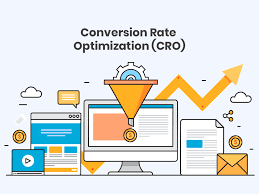This article will delve into the world of conversion rate optimization (CRO), a powerful tool used by businesses to increase their website’s effectiveness.
Conversion rate optimization is the process of analyzing and optimizing a website to increase its ability to convert visitors into customers or subscribers. This article will provide an overview of CRO and its importance in today’s business world.
It will discuss the steps involved in the CRO process, including identifying goals, analyzing data, developing hypotheses, and testing. The article will also highlight best practices and case studies to help businesses understand how they can use CRO to their advantage.
In today’s competitive business world, having a website that attracts visitors is not enough. To be successful, businesses need to convert those visitors into customers or subscribers. This is where conversion rate optimization (CRO) comes in.
CRO is the process of analyzing and optimizing a website to increase its ability to convert visitors into customers or subscribers. With CRO, businesses can increase their website’s effectiveness and drive revenue growth.
The Importance of Conversion Rate Optimization:
Conversion rate optimization is important for businesses of all sizes because it helps them maximize the value of their website visitors. By optimizing their website, businesses can improve their customer experience and increase their conversion rates.
This means more customers and revenue for the business. Moreover, CRO allows businesses to make data-driven decisions, rather than relying on intuition or guesswork. This helps businesses make more informed decisions about how to optimize their website for maximum impact.
The CRO Process:
The CRO process involves several steps, each of which is critical to the success of the optimization effort. These steps include identifying goals, analyzing data, developing hypotheses, testing, and implementing changes.
Identifying Goals:
The first step in the CRO process is to identify goals. Businesses need to know what they want to achieve with their website, whether it’s increasing sales, generating leads, or building brand awareness. This helps them focus their efforts on the areas that will have the greatest impact on their business.
Analyzing Data:
The next step is to analyze data. Businesses need to understand how visitors are interacting with their websites and identify areas where they can improve the user experience. This involves analyzing metrics such as bounce rate, time on page, and conversion rate.
Developing Hypotheses:
Once businesses have identified areas for improvement, they need to develop hypotheses. Hypotheses are ideas about what changes will have the greatest impact on the website’s ability to convert visitors into customers or subscribers. This involves brainstorming, research, and analysis to come up with potential solutions.
Testing:
The next step is testing. Businesses need to test their hypotheses to determine which changes will have the greatest impact on their website’s conversion rate. This involves creating variations of web pages and testing them against each other to see which one performs better.
Implementing Changes:
Finally, businesses need to implement changes based on their test results. This involves making changes to the website and monitoring the impact on conversion rates. It is important to continue testing and iterating to ensure that the website is continually optimized for maximum effectiveness.
Best Practices for Conversion Rate Optimization:
There are several best practices for conversion rate optimization that businesses should follow to ensure the success of their optimization efforts. These include:
- Focusing on the user experience: The website should be easy to navigate, visually appealing, and provide clear calls to action.
- Testing everything: Businesses should test everything, including headlines, copy, images, and calls to action, to identify the changes that will have the greatest impact on conversion rates.
- Using data to make informed decisions: Data should drive all decisions related to optimization, rather than relying on intuition or guesswork.
- Continuously optimizing: Optimization is an ongoing process, and businesses should continually test and iterate to ensure maximum effectiveness.
- Prioritizing high-impact changes: Businesses should focus on changes that are likely to have the greatest impact on conversion rates, rather than making minor tweaks that may not have a significant impact.
- Considering the entire customer journey: Optimization efforts should not be limited to the website. Businesses should consider the entire customer journey, from initial contact to post-purchase follow-up, to identify areas for improvement.
Case Studies:

source: Google Images
To help businesses understand how CRO can be used to their advantage, let’s take a look at a few case studies.
Case Study 1: Moz
Moz is a software company that provides tools for search engine optimization (SEO). They used CRO to improve the effectiveness of their website’s free trial signup page. They identified that the signup form was too long and complex, which was discouraging visitors from completing the process. They simplified the form and removed unnecessary fields, resulting in a 52% increase in free trial signups.
Case Study 2: Basecamp
Basecamp is a project management software company that used CRO to improve its website’s ability to generate leads. They identified that their website’s home page was not effective at communicating the benefits of their software. They created a new home page with a clearer message and more prominent calls to action, resulting in a 14% increase in leads.
Case Study 3: Airbnb
Airbnb used CRO to improve its website’s ability to convert visitors into bookings. They identified that the photos on their website were not effective at showcasing the properties, which was impacting conversion rates. They hired professional photographers to take high-quality photos of the properties, resulting in a 40% increase in bookings.
Conclusion:
In today’s business world, having a website that attracts visitors is not enough. To be successful, businesses need to convert those visitors into customers or subscribers.
Conversion rate optimization (CRO) is the process of analyzing and optimizing a website to increase its ability to convert visitors into customers or subscribers.
By following best practices and leveraging case studies, businesses can use CRO to maximize the value of their website visitors and drive revenue growth.

